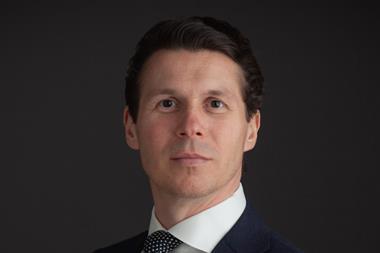Nigel Currie explains the opportunities to be found in major sponsorship deals
The sponsorship industry is now worth in the region of $34bn (£18.38bn) a year worldwide. In its early days, the insurance companies and groups were one of the first product sectors to embrace sponsorship and today continue to do so as sponsorship is increasingly used to spearhead brands marketing campaigns.
Sponsorship as an industry is growing faster than any other marketing sector. As advertising and other marketing sectors struggle, sponsorship with its ability to deliver experiential and associative marketing platforms, is playing an increasingly important role in the plans of senior marketers in different industry sectors.
This is particularly the case for the financial services industry and within that sector the insurance companies and groups have and are continuing to lead the way.
Companies and brands in Europe spend $9.5bn (£5.13bn) on sponsorship each year, almost $2bn (£1.08bn) of this coming from the UK. This money is spent on a variety of different types of sponsorship: the arts, music, environment, charity and broadcast, but it is sport that is by far the dominant player, accounting for around 80% of the market.
Traditionally the poor relation to advertising, sponsorship was left to the tobacco industry (who of course were prevented by legislation from undertaking most of the usual forms of marketing) to lead the way.
In the 1970s and 1980s cigarette brands pumped millions of pounds into a variety of sports, such as golf, cricket, rugby, snooker and darts. Many other industry sectors were slow to adopt sponsorship - many saw it as glorified hospitality on which decisions were made on the whim of the chairman.
Indeed, the clear lack of understanding of the medium and the random and unstructured approach adopted by many companies and brands did little to alter that perception.
However, that is an accusation that certainly couldn't be levelled at the insurance industry. From the early days insurance companies and brands identified sponsorship as a marketing discipline that could deliver benefits and meet a number of the needs that weren't being met by more traditional and established forms of marketing.
Exploit sponsorship
One of the first companies to identify and exploit sponsorship to its maximum potential was Cornhill Insurance. Almost 30 years after its groundbreaking sponsorship of English Test cricket began, the sponsorship is still talked about at conferences and in presentations as one of the most successful ever sponsorship programmes.
In 1978 when Cornhill started its sponsorship, English cricket was in a poor way. The team had been decimated by the Kerry Packer regime, recent results had been poor and financially the game was in trouble.
Cornhill's entry into cricket saw it hailed as the financial saviour of the game while on the pitch the emergence of two outstanding young players, Ian Botham and David Gower set about restoring England's playing fortunes.
However the most significant effect came for Cornhill itself. Being much smaller at the time than the likes of Eagle Star and Prudential, it was unable to afford extensive TV advertising campaigns and its awareness among consumers was just 2%.
Within 18 months of the start of the sponsorship, its awareness levels had increased dramatically to 28% and the rest, as they say, is history.
Other insurance companies have also led the way through innovative sponsorship programmes. Prudential was the first ever sponsor of cricket's World Cup, AXA became the high-profile sponsor of the FA Cup and more recently Saga sponsored the Chelsea Flower Show.
Different ways
Of course, there is a long list of insurance companies who have used sponsorship effectively in different ways: Norwich Union, CIS, Brit, Allianz and Frizzell (an affinity brand of Liverpool Victoria), whose sponsorship of cricket's County Championship proved so successful that on renewal it was transferred to their main brand Liverpool Victoria.
Recently a new name to the consumer shot to prominence when American giant, AIG, announced its new sponsorship of Manchester United, replacing Vodafone.
The agreement is worth £14.5m per year, 50% more than any other team sponsorship agreement in the Premiership. The magnitude of Manchester United as a brand, its global reach and the range of other benefits it has to offer were key in attracting a sponsor such as AIG.
These benefits, which apply to most major properties these days come in a number of forms and include:
Exposure/awareness: sponsorship has the ability to deliver extremely high levels of media exposure creating consumer awareness, and is particularly effective for launching and establishing new brand names
PR opportunities: developing insurance-related media and PR stories has limited interest. However, the ability to PR a major sporting team or event that you sponsor has considerably more consumer appeal
Perception: insurance, to most consumers, is a boring product. However many insurance brands have used sponsorship to improve their image by associating themselves with glamorous, exciting high-profile sporting individuals, teams or events
Hospitality: sponsorship of major teams or events ensures access to the very best hospitality/entertainment options, which can be an invaluable B2B tool. Again, this was something Cornhill exploited effectively in the days when it was essential to develop strong relationships with brokers
Sales promotion: sponsorship presents a variety of marketing options, which can be exploited and developed to deliver business benefits
Direct marketing: sponsorship can present outstanding opportunities for reaching target groups through the extensive mailing lists/databases held by governing bodies and rights holders.
The last two on this list are very significant as they are examples of where sponsorship is being used increasingly to drive sales and develop new business opportunities.
Obviously, the effectiveness of this depends on the product sector. Within sponsorship, product sectors such as telecoms, drinks, airlines and some insurance companies have developed models for using their sponsorship programmes to aggressively develop new business opportunities.
The fact that many companies are seeing their sponsorships as potential revenue generators is highly significant and will undoubtedly further increase interest in the major sponsorship properties.
Also, as the proliferation of the media continues, it is becoming much harder to reach mass TV audiences through advertising. Sponsorship - particularly of major sports - will still deliver those audiences and is continuing to offer new and innovative marketing opportunities.
As product sectors go, insurance is in a very strong position. The tobacco sector has all but gone from the sponsorship scene and other product sectors, such as alcohol and fast food, will begin to come under pressure from lobbying groups and the threat of new legislation restricting the effectiveness of their marketing programmes.
As such, over the next few years, even more opportunities will present themselves and no doubt the insurance sector will once again be at the front of the queue. IT
' Nigel Currie is director of sports marketing agency, brandRapport, and chairman of the European Sponsorship Association
Hosted by comedian and actor Tom Allen, 34 Gold, 23 Silver and 22 Bronze awards were handed out across an amazing 34 categories recognising brilliance and innovation right across the breadth of UK general insurance.













































